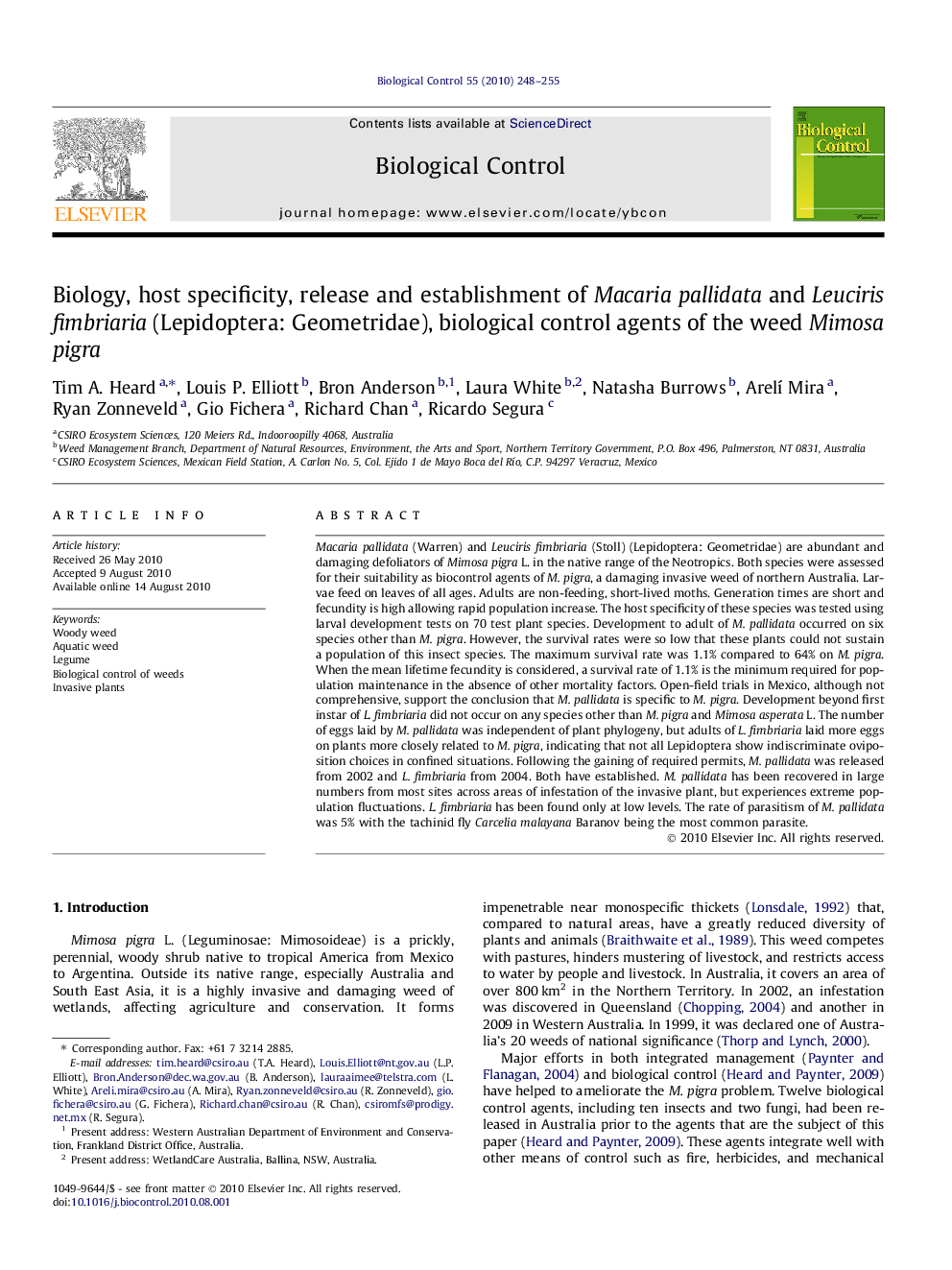| کد مقاله | کد نشریه | سال انتشار | مقاله انگلیسی | نسخه تمام متن |
|---|---|---|---|---|
| 4504465 | 1321094 | 2010 | 8 صفحه PDF | دانلود رایگان |

Macaria pallidata (Warren) and Leuciris fimbriaria (Stoll) (Lepidoptera: Geometridae) are abundant and damaging defoliators of Mimosa pigra L. in the native range of the Neotropics. Both species were assessed for their suitability as biocontrol agents of M. pigra, a damaging invasive weed of northern Australia. Larvae feed on leaves of all ages. Adults are non-feeding, short-lived moths. Generation times are short and fecundity is high allowing rapid population increase. The host specificity of these species was tested using larval development tests on 70 test plant species. Development to adult of M. pallidata occurred on six species other than M. pigra. However, the survival rates were so low that these plants could not sustain a population of this insect species. The maximum survival rate was 1.1% compared to 64% on M. pigra. When the mean lifetime fecundity is considered, a survival rate of 1.1% is the minimum required for population maintenance in the absence of other mortality factors. Open-field trials in Mexico, although not comprehensive, support the conclusion that M. pallidata is specific to M. pigra. Development beyond first instar of L. fimbriaria did not occur on any species other than M. pigra and Mimosa asperata L. The number of eggs laid by M. pallidata was independent of plant phylogeny, but adults of L. fimbriaria laid more eggs on plants more closely related to M. pigra, indicating that not all Lepidoptera show indiscriminate oviposition choices in confined situations. Following the gaining of required permits, M. pallidata was released from 2002 and L. fimbriaria from 2004. Both have established. M. pallidata has been recovered in large numbers from most sites across areas of infestation of the invasive plant, but experiences extreme population fluctuations. L. fimbriaria has been found only at low levels. The rate of parasitism of M. pallidata was 5% with the tachinid fly Carcelia malayana Baranov being the most common parasite.
A larva of Macaria pallidata and its damage to leaves of its host plant Mimosa pigra.Figure optionsDownload as PowerPoint slideResearch highlights
► Macaria pallidata and Leuciris fimbriaria were assessed for biocontrol of Mimosa pigra.
► Both species were sufficiently host specific for release in Australia.
► Both species have established in the field.
► M. pallidata can be abundant but shows extreme population fluctuations.
Journal: Biological Control - Volume 55, Issue 3, December 2010, Pages 248–255